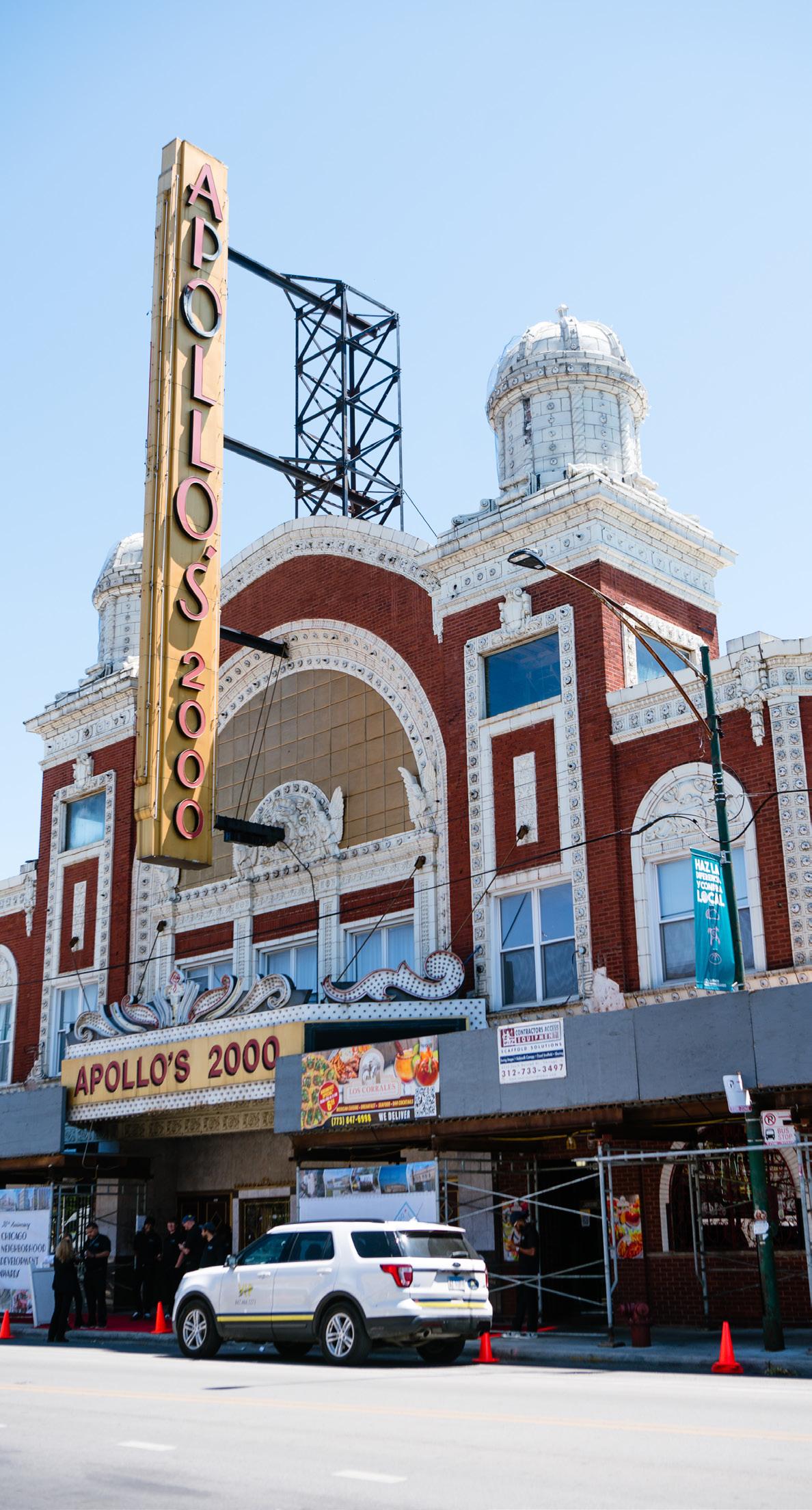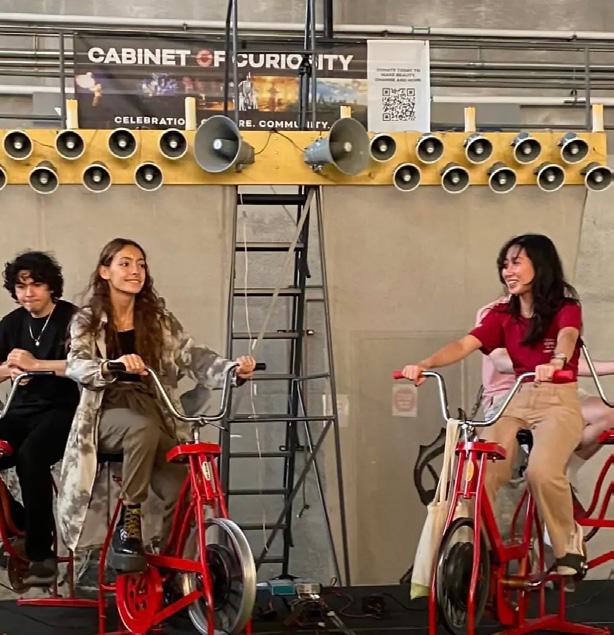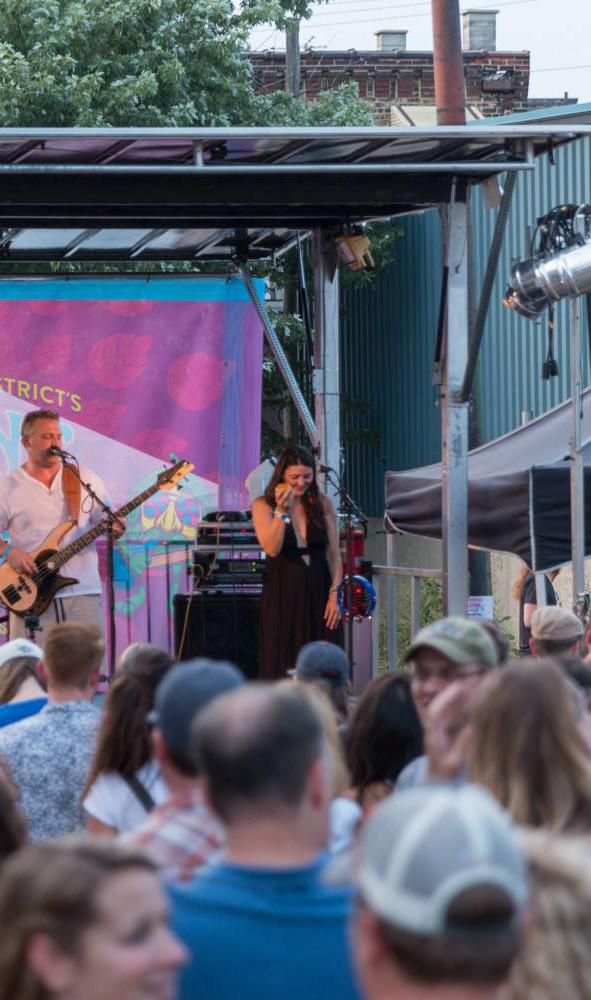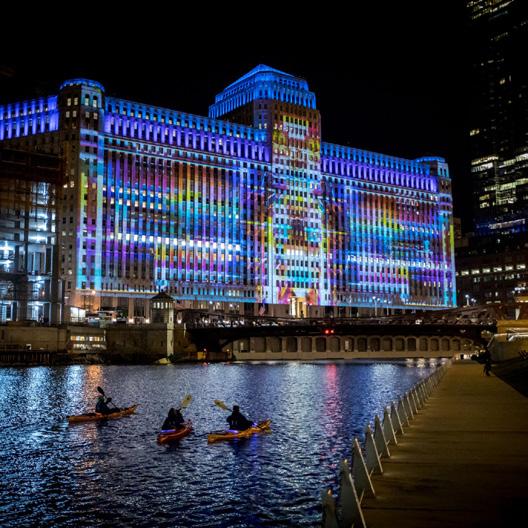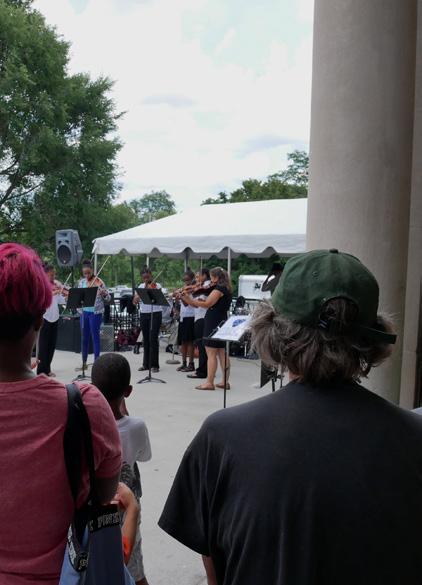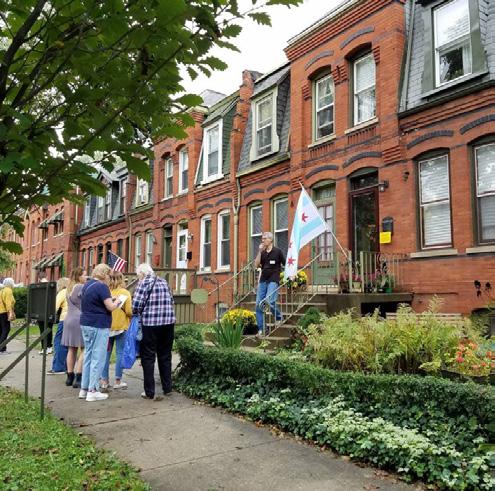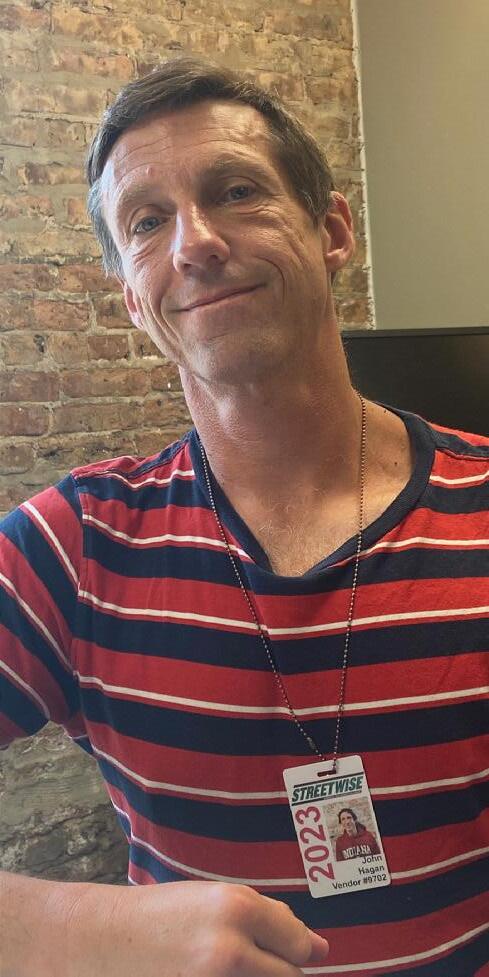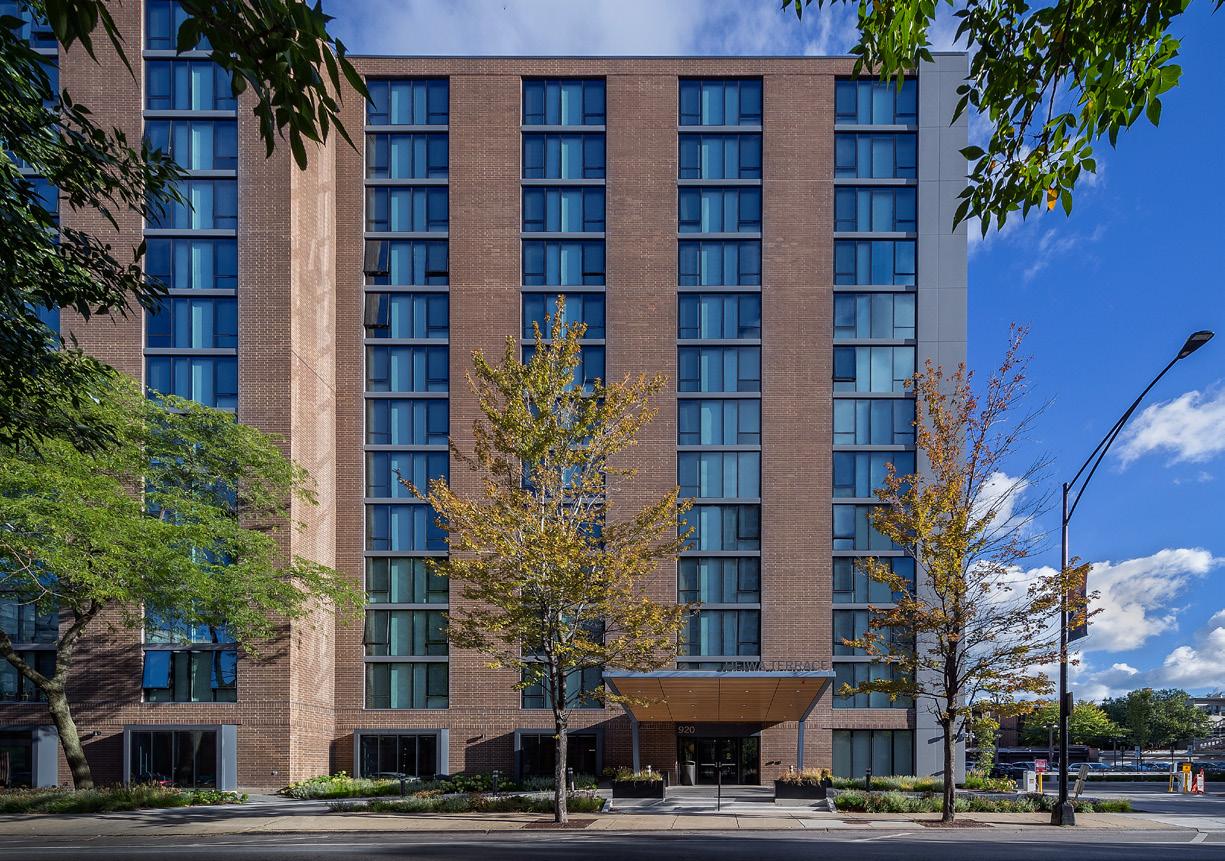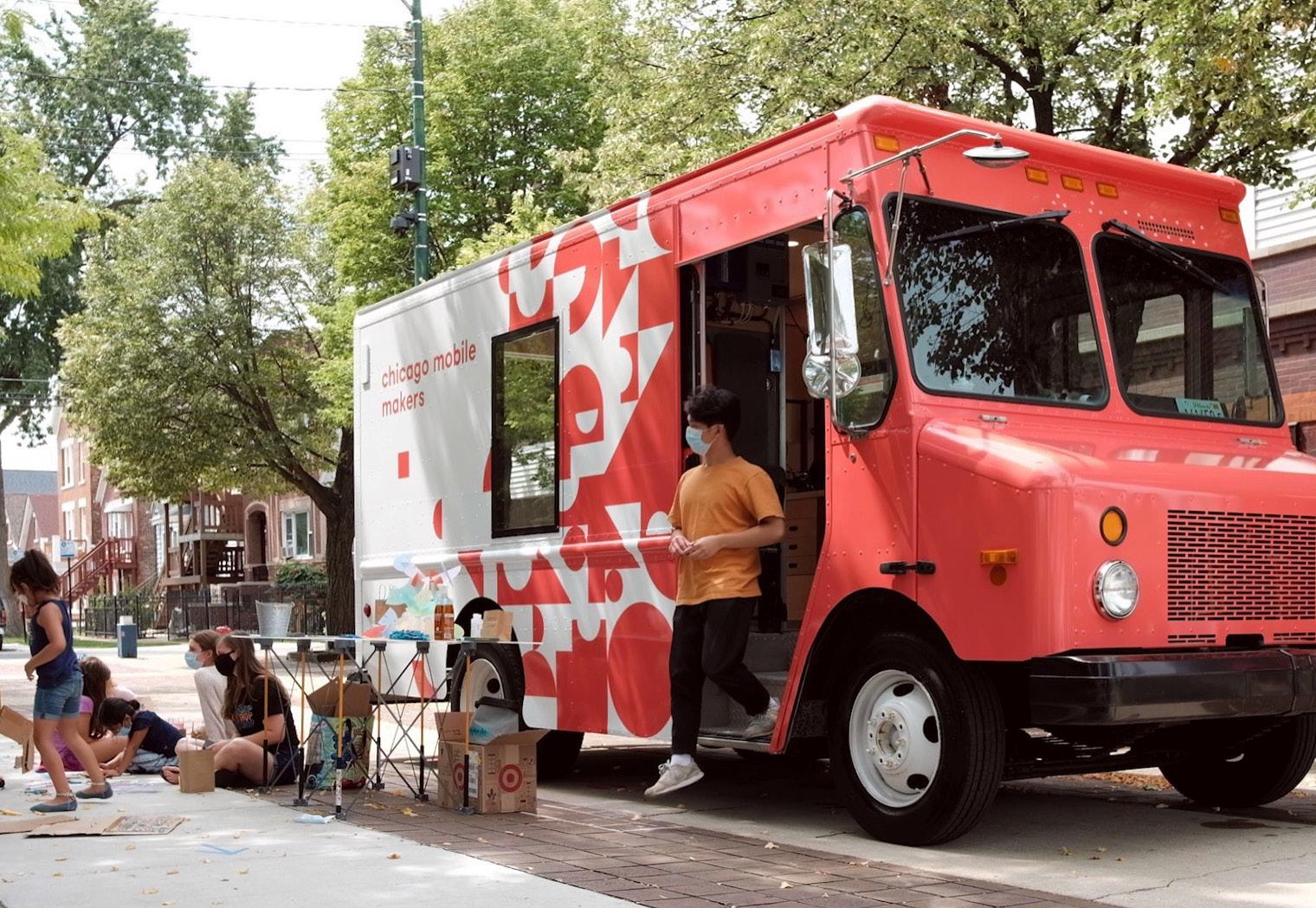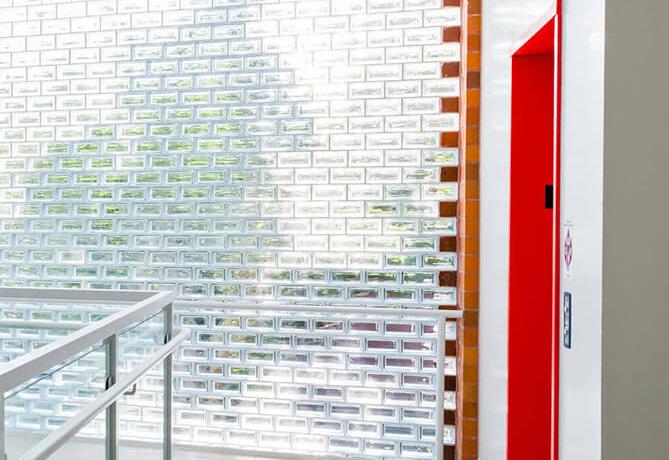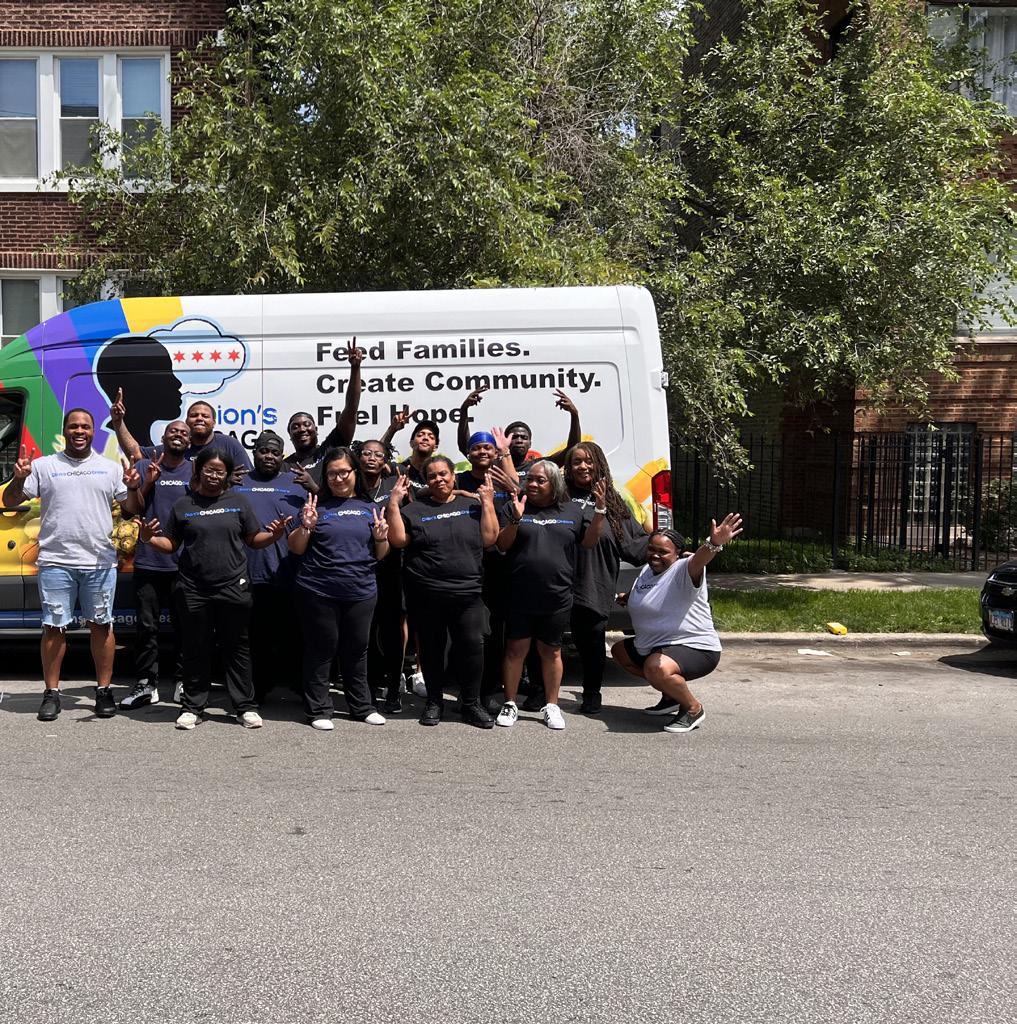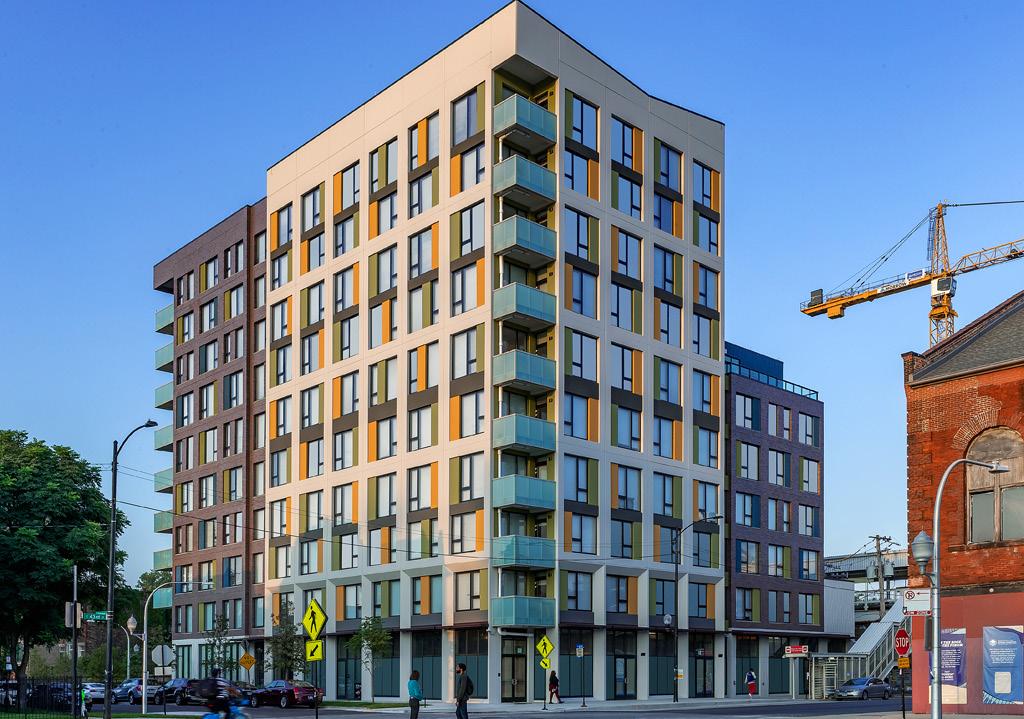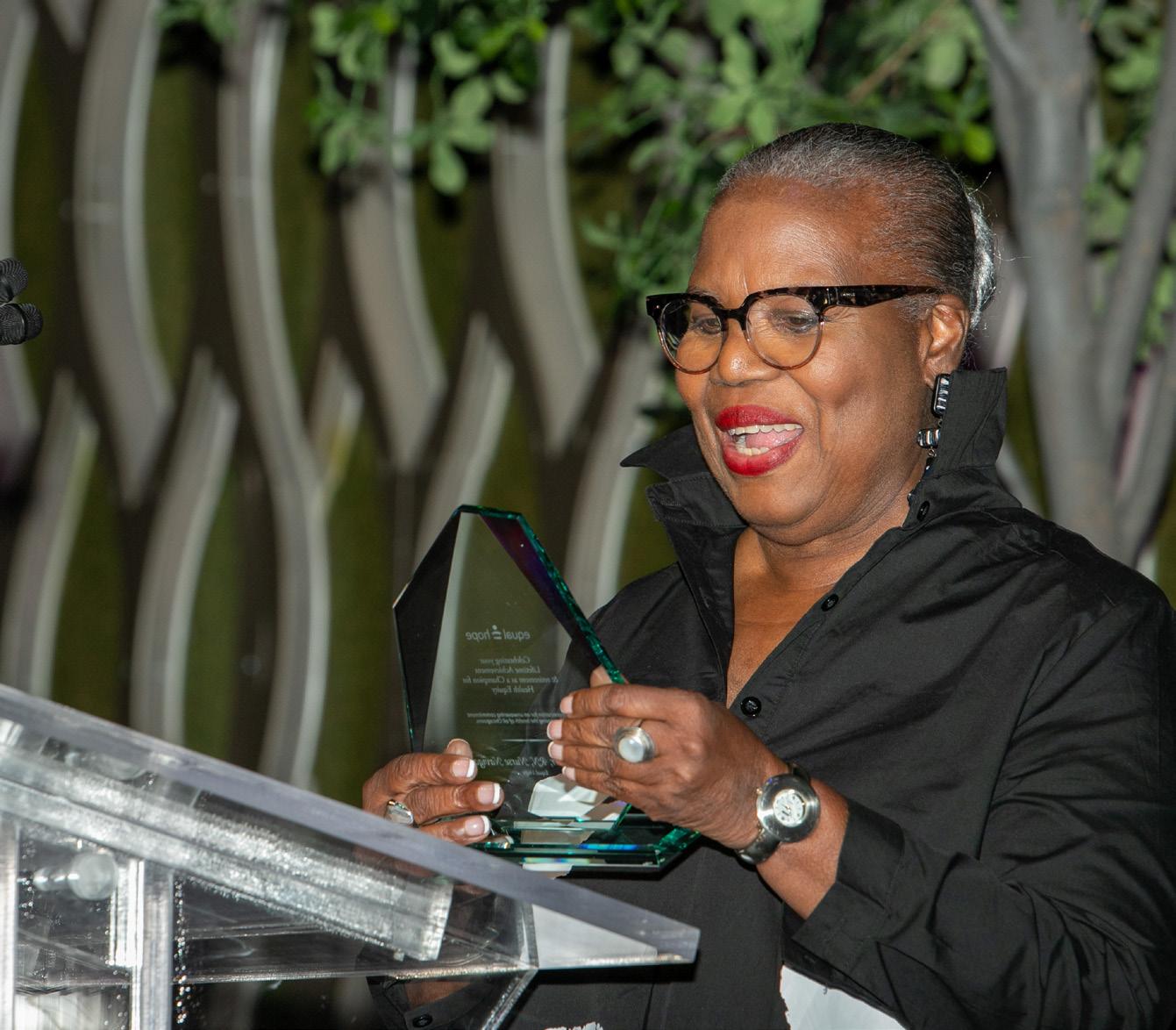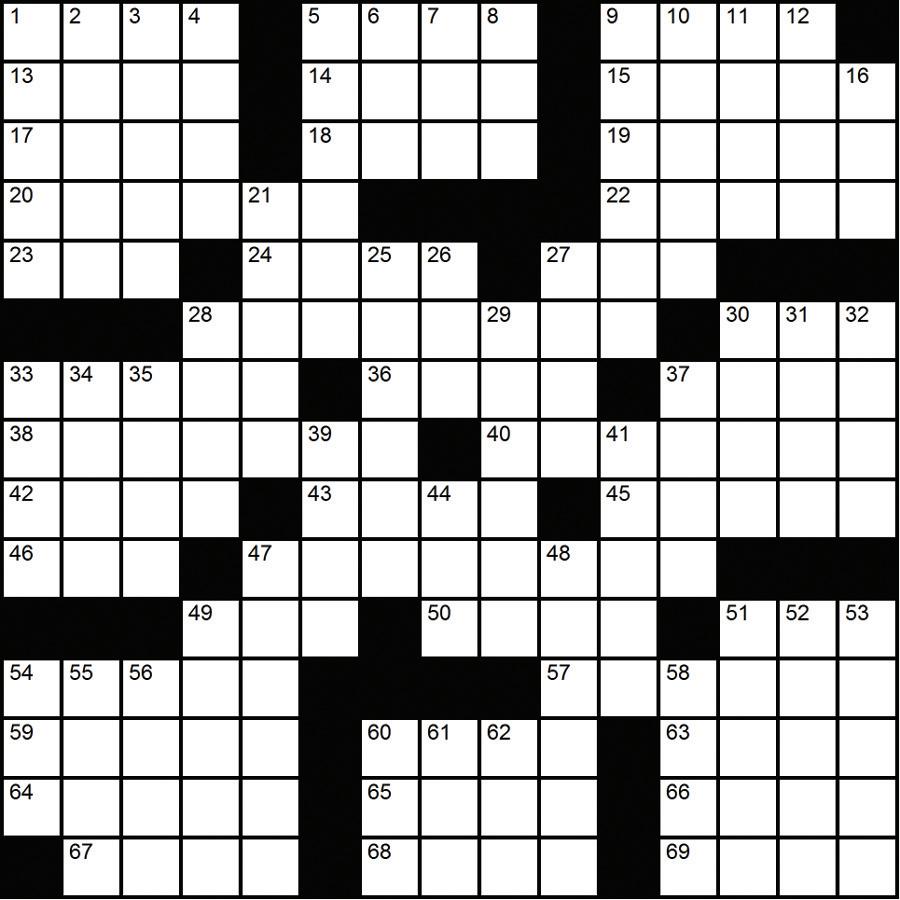Family Flicks!
Movies in the Parks
The Chicago Parks District continues its series of free summer screenings in parks across the city. Gross Park (1700 W. Henderson) will showcase the hit family movie “Wonka” on August 1 at 8:15 p.m., focusing on the origins and rise of the famous chocolate magnate. August 2 sees a screening of the new Disney movie “Wish” at Ellis Park (3520 S. Cottage Grove), telling the tale of a young girl who wishes upon a star and gets an answer back. At 8:30 p.m. on August 6, Harold Washington Park (5200 S. Hyde Park) will present the 80s classic “Back to the Future”, in which a high school student is sent 30 years into the past, to his parent's first date. Navy Pier continues its Monday Water Flicks series with an August 5 showing of “Big Hero 6”, a story of a young inventor and his android friend forming a superhero team, at 6:30 p.m.
Keep on Truckin'!
Chicago Brewing District’s ‘Dancing in the Streets’ The West Town Chamber of Commerce partners with On Tour Brewing to produce this three-day festival celebrating the best of local breweries and live music. The event features the finest local brewery products on tap, alongside local restaurants and food trucks, independent artists, and a full schedule of musicians. Admission is free with a $10 suggested donation supporting local non-profits. The festival runs August 2 to 4, open 5-10 p.m. Friday and noon-10 p.m. Saturday and Sunday.
Jukebox Jumble!
‘Broadway Rocks’ at Millennium Park
As part of the ongoing Grant Park Music Festival series at the Jay Pritzker Pavilion in Millennium Park, “Broadway Rocks” showcases the best of Broadway’s jukebox musicals, including artists from ABBA to Queen and Michael Jackson. The show will feature performances by American Idol finalist and Broadway star LaKisha Jones, critically acclaimed vocalist Chloe Lowery, and prominent actor and director Dan Domenech, each accompanied by the Grant Park Orchestra. The concert is 6:30-8 p.m. July 31; admission is free, with seating available by reservation.
Holler of Lolla!
Lollapalooza
One of the largest music festivals in the world returns to Grant Park for its 19th year, showcasing a variety of today’s hottest musicians alongside over 170 bands across 8 stages. Headliners for this year’s event include Megan Thee Stallion, Hozier, The Killers, Future X Metro Boomin, SZA, Stray Kids, and Blink-182. Performances are accompanied by a selection of food and drink from local Chicago restaurants. The festival takes place August 1 to 4, running from noon-10 p.m. each day. Tickets start at $170 and can be purchased at lollapalooza.com
Pedal Power!
Pedal Powered Playground at Marquette Park
Cabinet of Curiosity brings an all-ages educational show to Marquette Park (6743 S. Kedzie) August 3 from 1-2:30 p.m. Audiences will get a chance to interact with a variety of pedal-powered devices, from bubble machines to sound makers. The event includes engineering workshops and health-oriented talks targeted towards families, with free admission.
A Concrete Canvas!
Art on the Mart
Every night of the week from 9-9:30 p.m. through September 11, the historic Merchandise Mart transforms into the world’s largest permanent digital art projection. The video installation, taking up the Mart’s entire 2.5-acre facade, is visible along the street and the popular Riverwalk. This summer features projections designed by artists Cory Arcangel and Yinka Ilori, focusing on traditional landscapes and a re-creation of a personal spiritual experience.
Summertime Tunes!
Jazz’n The Parks at South Shore Park
The South Side Jazz Coalition celebrates its third year of bringing live jazz performances to local parks in its mission to preserve South Side jazz culture. The group will host a free concert showcasing musicians of all ages, 5-6:30 p.m. August 6 at the South Shore Cultural Center, 7059 S.South Shore Drive. Attendees are encouraged to join the open stage with their own instruments or original pieces.
Fitness Fun!
Millennium Park Summer Workouts
Millennium Park hosts its series of weekly Saturday exercises throughout the summer, with this week's event occurring August 3 from 8-11:45 a.m. on the Great Lawn. The lineup includes a mixture of activities such as Pilates, yoga, cardio kickboxing, and Zumba, designed for both beginners and experts. The workouts are accompanied by live music performances. Admission is free, but attendees are encouraged to bring their own mats.
Arts in the Park!
North Lawndale Arts Fest
The North Lawndale Community Coordinating Council hosts its eighth annual Arts Fest at Douglass Park (1401 S. Sacramento) on Saturday, August 3. Local vendors showcase original artworks, cuisine, and more, with additional performances by live musicians and other artists. Admission is free, with visitors encouraged to support vendors through purchases. The festival will run from 11 a.m.-7 p.m.
History and Heritage!
Pullman Town First Sunday Walking Tours
On the first Sunday of each month, the Historic Pullman Foundation offers a series of guided walking tours through the historic Pullman company town, located in south Chicago in the Pullman National Historical Park. Each tour leaves at 1:30 p.m. from the Exhibit Hall (11141 S. Cottage Grove) and lasts around 90 minutes, focusing on the role of Pullman in American industry and the national labor movement. Tickets are $15 in advance through the Foundation’s website or $20 at the door, with seniors and students receiving discounts.
the excitement of the olympics
Allen: The first Olympic Games ever were in Olympia, in southern Greece, in honor of the Greek god Zeus in 776 BCE. The Olympic Games as we know it now were held in Athens in 1896 and were attended by 280 athletes, all men, from 12 countries. One of the most memorable was in 1936 when Jesse Owens ran in Berlin, when Hitler was over Germany.
Russell: One of my best was the 1976 Olympics in Montreal. The U.S. boxing team won the gold medal with flyweight Leo Randolph; lightweight, Howard Davis Jr.; light welterweight, Sugar Ray Leonard; middleweight, Michael Spinks and heavyweight Leon Spinks. This was a great boxing team. They all turned pro except for Leo Randolph. Sugar Ray Leonard dominated. Leon beat Muhammad Ali.
John: My favorite was the 1980 Lake Placid Winter Olympics and the USA hockey team. Prior to 1980, the Soviet
Union won four straight gold medals in hockey and they were favored to win again because they had a team of professionals. The U.S. had a team of amateurs with a head coach named Herb Brooks, so it looked like a mismatch. But the United States made an example of who is not the most athletic, who is the tallest or who had the most talent, but who wanted it more, because the U.S., like now, was in a downward trend and needed something to inspire them.
First, they had a 2-2 draw against Sweden, then they upset Czechoslovakia, which was also considered a better team, 7-3; and then the Soviet Union 4-3 and finally Finland in the gold medal round. It lifted the morale of the U.S. and that’s what I remember most.
Allen: I wasn't there in 1936, when Jesse Owens won the gold, but I have read about it and seen tapes. I think the
reason is because I'm a runner who has completed three marathons. But my other Olympics is 2008 in Beijing: Michael Phelps won eight gold medals in swimming and Usain Bolt set records in the 100-meter, 200-meter and 100-meter relay. He was labeled the fastest human being alive.
Russell: I'm also going back to the 1992 Dream Team: Charles Barkley and Scottie Pippen, Michael Jordan, Karl Malone. They definitely dominated; there will never be a team like that again. A special mention to Nancy Kerrigan. I remember she got clubbed, allegedly by a friend of Tonya Harding, so she couldn’t skate in 1994. And she still competed. I am glad she got a medal. It shows you can’t cheat. Another special mention to gymnast Simone Biles, heading to her third Olympics. Michael Phelps: he won more gold than anybody swimming.

John: A footnote after the 1980 Winter Games, the Summer Games were held in Moscow that year. Since the Soviet Union invaded Afghanistan. President Carter decided to boycott the U.S. from going to Moscow, which was a shame, because you don’t know how many more medals the U.S. could have won there. Then, in 1984, the Soviet Union decided that they were not going to participate in the Los Angeles games because of what happened in 1980. The Russians still stayed in Afghanistan and only began to withdraw in 1988.
Allen: We look forward to this year’s Olympics, which will be held in Paris, to see who comes back with medals.
Any comments, suggestions or topic ideas for the SportsWise team? Email StreetWise Editor Suzanne Hanney at suzannestreetwise@yahoo.com
Rashanah Baldwin
Vendors (l-r) Russell Adams, John Hagan Jr., and A. Allen chat about the world of sports.
CHICAGO NEIGHBORHOOD DEVELOPMENT
COMMUNITY CUT
THREE DECADES OF NEIGHBORHOOD GROWTH
The best way you demonstrate love for someone is by investing in them, Mayor Brandon Johnson told the audience at the 30th annual Chicago Neighborhood Development Awards (CNDAs), which have contributed $1.4 billion to nonprofits and for-profits that uplift the city since their inception.
“We are proud to have recognized each project with either city approval, city funding, or city support,” Mayor Johnson told the crowd of architects, community organizers, and leaders of non-profits, for-profits and financial institutions. “When it comes to developing our neighborhoods, public and private partnerships are crucial. It takes an awful lot of courage to turn your vision into brick and mortar.”
“Through world-class architecture, design and restoration projects, you are investing in the vitality of our communities and making this city even greater” -- not only in its physical landscape but strengthening bonds between communities and “creating a more inclusive and equitable Chicago,” Mayor Johnson said in the CNDA program book.
Organized by the nonprofit Local Initiatives Support Group (LISC) Chicago , the annual CNDAs are known as the “Oscars” of community development and include the Richard H. Driehaus Foundation Awards for architecture that enhances the visual, social and cultural fabric of neighborhoods. The Oscars nickname was especially fitting given this year’s theme, “Community Cut: Three Decades of Neighborhood Growth,” symbolizing the collaborative effort of creating a cinematic masterpiece. In addition, the venue was Apollo’s 2000 theater in Little Village, recently awarded city landmark designation.
The red carpet was rolled out for the crowd dressed in everything from business casual to cocktail and evening wear and ethnic dress. And, often reflecting a lifetime of work, the speeches were as deeply personal as those at the Academy Awards.
“This recognition means so much. Thank you, LISC, Driehaus, and CNDA jury,” Jaime Torres Carmona, principal founder of Canopy, said. “My parents raised me in the same neighborhood where we all sit today to celebrate, the same neighborhood where [his award-winning Enlace headquarters] sits as well. They fought for a better life for our family surrounded by gangs and violence. They are the reason I stand here today as an architect with a passion for social change through design in communities of struggle. My parents’ story is one
of hundreds in Chicago where families fought and still fight for peace, better education and improved quality of life. This building now provides a new neighborhood destination for peace, health, community and organizing.”
JOEL RODRIGUEZ (1), a community organizer with the Southwest Organizing Project (SWOP) and winner of the CIBC Emerging Leader Award, dedicated his award to his wife, Ruby, and also to his parents, Miguel and Norma, who died Nov. 19 and 20, 2020, respectively. of COVID. Since age 22, Rodriguez has “dedicated my life to building up young people and building back the community, the last 12 years with SWOP, and I am humbled to part of such an amazing team.”
Rodriguez has led youth workforce initiatives, collaborated with the Grassroots Alliance for Police Accountability and helped develop a local pilot of the national Community Learning Partnership to train emerging neighborhood leaders. He said he was inspired by the biblical verse Micah 6:8, “To do justice, love mercy and walk humbly with your God.”
“My desire is we continue to have the courage and relentlessly fight for justice and be merciful to everyone around us – our neighbors – no matter what they look like and what language they speak.”
Posthumously presented The Richard M. Daley Friend of the Neighborhood Award, Marilyn Katz (2) was a community activist and public relations firm owner for 50 years who provided guidance to the Chicago Housing Authority, City of Chicago, Cook County and The John D. and Catherine T. MacArthur Foundation. She was also instrumental in starting the CNDAs and in securing the Low-Income Housing Tax Credit as the single most important resource for the creation of affordable housing.
“Marilyn’s work always resulted in large-scale impacts, always close to her heart. She wanted a city that would work for everyone,” Cook County Board President Toni Preckwinkle said in announcing the award.
“Marilyn was my friend and I miss her,” Preckwinkle continued. “She was not afraid to tell me what to do. She was not afraid to tell anybody. And the higher up the food chain you go, the harder that is, but Marilyn never hesitated to tell you if you were on the wrong path.”
by Suzanne Hanney / photos provided by LISC Chicago
Preckwinkle’s favorite story was from last fall, when Marilyn said that Preckwinkle should bring Mayor Johnson and Cardinal Blase Cupich together to solve the migrant issue because the Roman Catholic archdiocese of Chicago had schools and churches that were underutilized. Preckwinkle made the introduction, the cardinal provided a list of vacant schools, and a couple of weeks before the CNDAs, a new shelter opened at St. Bartholomew Church on the Northwest Side.
“I am grateful to the mayor and the cardinal,” Preckwinkle said.
In full disclosure, Marilyn was also my friend and I miss her too. She organized semiannual dinners and political discussions in her home preceded by shopping trips to a consignment clothing store. She praised StreetWise to her friends in front of me. And during a mayoral election campaign, when a candidate had not returned a questionnaire I needed for publication, I called her. She had the candidate on the phone to me in 10 minutes, with a promise to deliver.
The 30th Annual CNDA winners include:
The Richard H. Driehaus Foundation Award for Architectural Excellence in Community Design:
First Place: John Ronan Architects for Chicago Park District Headquarters (3), 4830 S. Western Ave. When you are driving down Western Avenue, it’s “jaw-dropping to see this amazing building – a beautiful place to play and to walk” – in what used to be a dirty site, said Chicago Park District Superintendent (CPD) and CEO Rosa Escabeno of the combination headquarters/park fieldhouse. CPD offices had been downtown, but with 600 parks, it was clear its new HQ should be in a neighborhood, she said.
The 17-acre Brighton Park site, a former brownfield, was chosen from among 20 around the city because the neighborhood is among the top 5 communities that need open space, according to CPD Director of Planning and Development Heather Gleason.
Architect John Ronan said the circular layout of his 18,000-square-foot fieldhouse creates two spacious openair interior courtyards and gives the staff dignified workspace that puts them in contact with the people they serve. Their upstairs breakroom straddles a courtyard on one side and a gym on the other. It is also made of salmon-colored Chicago brick reclaimed from two demolished buildings, wrapped in bronze-tinted glass and reclaimed ash wood, for abundant natural light.
Second Place: LBBA for BUILD Chicago (4), 5100 W. Harrison St.
BUILD Chicago is a 55-year-old, comprehensive youth organization “that helps young people navigate growing up and finding the best place in their future,” said CEO Adam Alonzo. As LBBA engaged with the surrounding community in every stage of planning, design and construction, it turned out that youth, staff and neighbors aligned in their vision of a dream teen center, Alonzo said. BUILD’s existing 10,000-squarefoot space was seamlessly connected to the new three-story, 41,000-square-foot building, which uses natural light to create voluminous space. Care was also taken to how youth, staff, and community members would move through the building, Alonzo said. An exterior mural of their faces captures the essence of youth.
“It’s a steppingstone to anything you want to be in life,” said youth facilitator Dominique Young. There are sewing machines for fashionistas, a studio for those who want to make music, trainers for those who want to be basketball players.
Third Place: LBBA for Heiwa Terrace (5), 920 W. Lawrence Ave.
Heiwa Terrace began as affordable housing for Japanese seniors in Uptown in 1978 and retains its exterior Japanese garden. The 13-story, 204-unit building also features Japanese rice paper screens and artwork in its lobby, which LBBA honored and retained, while still mindful of a diversifying population. The tenant-in-place rehab featured larger windows and a new entrance canopy. Programming was shifted to the interior to allow a more light-filled, welcoming lobby, library and computer room: a community hub. The 525-square-foot units were opened up into one open, kitchen-to-living room space. Heiwa is a model of what a little imagination and a lot of investment can do to combat gentrification, said Senior Project Architect Kate Lengacher Cichon.
Honorable Mention: Canopy for Enlace Chicago Headquarters (6), 2759 S. Harding Ave. “Enlace” means “to interweave” and so the corner of this three-story building in Little Village is laced with brick and glass
(4)
(5) (6)
brick common to the neighborhood in a new contextual way, said Jaime Torres Carmona, principal founder of Canopy. Its south-facing windows open on a sunny day for fresh air and facilitated traffic flow when the building was used as a COVID relief center. The rooftop, with views of downtown, can be used for urban farming, fundraising, or a place of respite and meditation. Inside, there’s space for Zumba classes, health and legal clinics.
“I am thankful for this organization,” said community member Pablo Gonzalez Mendoza. “People are learning – just go to that building.”
The Richard H. Driehaus Foundation Community Design Impact Award: Maya Bird-Murphy Bird-Murphy was honored for amplifying the voices of everyday people in the architectural design process as the founder of Mobile Makers (7), an acclaimed nonprofit organization that brings design and skill-building workshops to youth in underserved communities so that they can also be changemakers. She expanded the nonprofit’s impact with the Mobile Makerspace, a repurposed USPS delivery van.
As an architecture student, Bird-Murphy loved the programs but felt isolated in a field that was neither diverse nor talking about issues. “I want community engagement to be an inte-
(7)
gral part of the design process, put people over profit, talk about collectivity over individualism.” During her work with a West Side plan, Bird-Murphy said there was a lot of Chicago politics involved. “I was able to cut through the noise” and talk to young people about a community center.
The Polk Bros. Foundation Affordable Rental Housing Preservation Award: Holsten Real Estate Development Corporation for the Lawson House (8), 803 N. Dearborn St./30 W. Chicago Ave.
The former Lawson YMCA opened in 1931 with 583 Single Room Occupancy units that featured just a bed, dresser, mirror and sink, communal showers and toilets. Holsten bought it for $1 and turned it into 409 studio apartments, each with private bathrooms and kitchens.
In the process of tuckpointing the Art Deco exterior, putting in new windows and roof and restoring a 19th floor roof deck, the developers overcame significant financing challenges in one of Chicago’s most expensive neighborhoods. Peter Holsten told the CNDA crowd about a range of funding sources, from the largest use of Low-Income Housing Tax Credits in Illinois history to Illinois Housing Development Authority (IHDA) and City of Chicago home loans, historic tax credits and Com Ed affordable housing loans.
(8)
“Everyone deserves stable housing,” said Andy Muentes, a returning Lawson House resident. The upgraded units give him peace of mind, while the amenities and social services are “a sign of hope that things can and will get better.”
The Blue Cross Blue Shield of Illinois Healthy Community Award: Dion’s Chicago Dream for Dream Deliveries (9)
Dream Deliveries modified the Amazon and Hello Fresh model to address food desert issues in Englewood. Its weekly free deliveries of bread, fruit and vegetables have grown to 1500 households in 60 of 77 Chicago neighborhoods and 30 suburbs: 1.1 million pounds since 2020, As a result, the nonprofit has developed leverage, while it simultaneously builds community: its 35 delivery people are each paid $20 an hour, and have a 98% completion rate, even in 20-below weather.
Meanwhile, older people don’t have to go out to the store and no one’s fridge is ever empty, said recipient Sherry Philips.
Because food deserts are related to diabetes and high blood pressure, Dream Deliveries coordinates with health care providers. There are so many more food-insecure people in Chicagoland, that he wants to scale up the model for everyone, founder Dion Dawson said.
The John D. and Catherine T. MacArthur Foundation Creative Places Award: The Chicago Tool Library (10), 4015 W. Carroll Ave., Ste. 101 www.chicagotoolibrary.org
In West Garfield Park, a former industrial warehouse is a place where community members borrow kitchen equipment or gear for gardening, camping and crafts.
Originally just 1200 square feet, the current facility is six times that size – and close to transit, to amplify its reach. Members range from the completely green, to those who have started handyman businesses and art galleries, to others who have painted murals or participated in community events.
“We are part of a growing movement that is prioritizing people over ownership, sustainability over waste,” Co-Founder and Executive Director Tessa Vierk said. “More than a collection of tools, we are an amazing hub, a community space for skill building and true community connections. It shows when we create space for Chicagoans to share resources, truly transformative things can happen.”
The Non-Profit Neighborhood Real Estate Development Award: PODER HQ Immigrant Integration Center (11), 3357 W. 55th St., poderworks.org “Poder” means “to be able to, to be empowered” in Spanish, and seeing it emblazoned vertically on the smokestack of the vacant Gage Park warehouse that is its 16,670-square-foot headquarters is a huge motivator. Inside,17 usable spaces include meeting rooms, training spaces, flex offices, a staff lounge and a file/print room. Designed to exude a sense of openness, inspiration and possibility, the Gage Park build-
ing features ample natural light in its classrooms and open spaces, while the outdoor plaza serves as a communal gathering spot, drawn in by diagonal stripes that seem to message, “here is your path.” There’s free wi-fi and event space to foster community engagement. With the new building, PODER was able to double its number of integrated English classes and instructors and welcome more community partners on-site.
The For-Profit Neighborhood Real Estate Development Award: The Habitat Company & P3 Markets for 43 Green (12), 4308 S. Calumet Ave. Sitting right at the 43rd Street station on the CTA Green Line, Bronzeville’s 43 Green, developed by the Habitat Company in partnership with P3 Markets, encompasses 98,000 square feet and features 99 units, roughly half affordable (51) and half market rate (48). With a mission to bring highquality, affordable housing options to South Siders, 43 Green is a catalyst for investment and renewal along 43rd Steet and surrounding neighborhoods.
43 Green is the initial phase of a $200 million Equitable Transit-Oriented Development (ETOD); it is intended to reduce the use of autos, populate an area with no population, provide both affordable housing for young people and commercial opportunities for entrepreneurs, and bring tax revenue to the city.
Seeing new housing developed, opportunities for retail, and people reinvesting in the community, has catalyzed good things that can happen to this community, Ald. Pat Dowell (3rd ward) said in a video.
(11)
The building is very modern and safe, with rooftop grills you would expect on the North Side, resident Gina Keys said in a video. “It’s everything I prayed for.”
The Chicago Community Trust Outstanding Community Plan Award: Far South Community Development Corporation for the Roseland Community Medical District Master Plan (13)
The area between two highways, from 95th Street to Chicago’s southern city limits, has a quarter of a million people who lack access to convenient quality health care: not just a hospital, but preventive medicine and mental health. The Roseland Community Medical District (RCMD) Master Plan outlines a comprehensive strategy for attracting and retaining hospitals, clinics, research and educational facilities on the 95-acre RCMD. Two complementary pillars of the Master
Plan are public investment in affordable housing and parks; and infrastructure such as public transit – the social determinants of health.
Since the plan was completed, the area has secured millions in state and federal funds and has seen the beginning of projects, such as the expansion of the CTA Red Line and supporting the Roseland Community Hospital in submitting a $50 million Transformation Plan to the Illinois Department of Health and Family Services.
Creating a better environment means that people gain a different perspective of their community; they feel they can trust it and enjoy it again, said Amina Brooks, executive director of the Far South Chicago Coalition.
(13)




